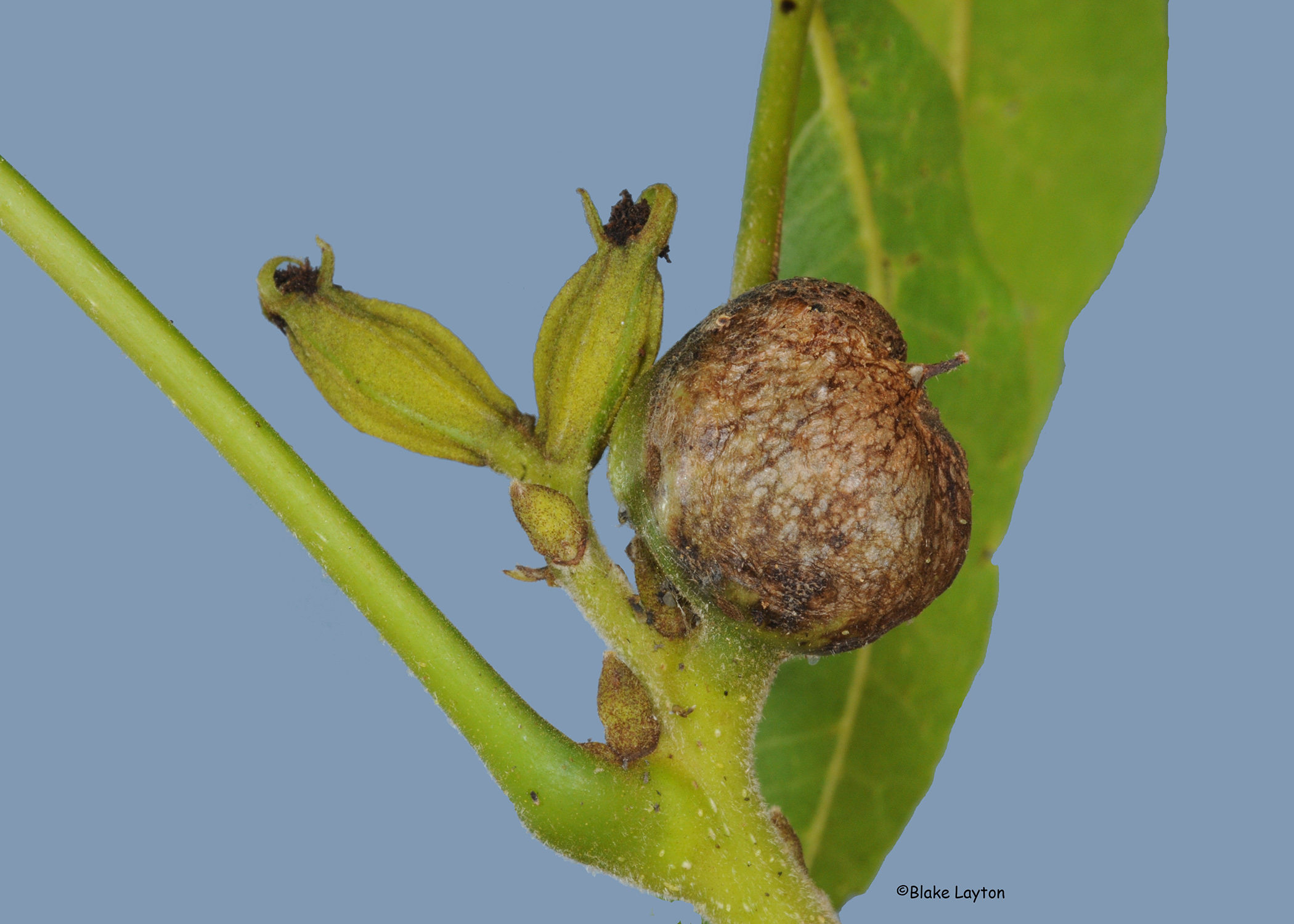Pecan Phylloxera, Vol. 4, No. 1

Phylloxera devastatrix
Order: Hemiptera
Family: Phylloxeridae
The scientific name of these insects gives a hint as to just how severely they can damage pecan trees. Not that heavy infestations will kill trees, but they can sure make them look bad and greatly reduce yields for a season or two. These aphid-like insects causes knotty growths on pecan twigs in the spring. Nymphs emerge from overwintering eggs and crawl to expanding leaf buds, where their feeding causes hollow, thick-walled galls to form around them, resulting in distortion of developing twigs, leaves and nuts. These galls split open in late May to release dozens of second generation adult females, and these produce a subsequent generation of free-living males and females. This generation does not produce galls or cause any real damage, but each female produces a single egg that will overwinter inside her body after she dies in a protected bark crevice.
Control: Timing is critical for successful phylloxera control. Insecticide sprays have to be applied in the narrow window between bud break and before new growth is 1 inch long. Sprays applied after galls have formed will not be effective. Sprays containing imidacloprid (Admire Pro, or many generics) or carbaryl (Sevin) provide good control if properly timed. Commercial pecan growers use high volume air blast sprayers to get good spray coverage of large trees, but finding a way to safely and properly treat mature pecan trees is a real challenge for most homeowners, especially those living in urban settings. There are a few commercial applicators who do such work, but treatment must be arranged in advance. Homeowners who live in rural settings and have adequate spray equipment can do a good job controlling phylloxera—if spray timing is right and coverage is adequate.
Phylloxera populations are cyclic, and trees that are “devastated” one year usually recover after a year or two, even if left untreated, and then it may be many years before another heavy outbreak occurs. Don’t be too hasty with the chainsaw!
The most important pest control decision for homegrown pecans is choice of varieties at planting. Unfortunately, varieties available from local nurseries and Co-ops are often varieties that do best in highly managed commercial orchards but are not well-suited for unsprayed situations. Varieties better suited for use in low maintenance situations include: Candy, Elliot, Curtis, Owens, Gafford, Melrose, Jenkins, and Syrup Mill along with several others. But disease and insect resistance aren’t the only factors to consider; do your homework and check with your local extension office when choosing pecans for home orchards. Resistance to pecan scab and other diseases is usually the primary selection criteria for such varieties, but they often have varying degrees of insect resistance/tolerance as well. Many of these varieties have smaller nuts than the commercial varieties, but they usually perform much better in unmanaged situations.
See page 15 of Extension Publication 2369, Insect Pests of Ornamental Plants in the Home Landscape for more information. Also see this older archived article on pecan phylloxera.
Blake Layton, Extension Entomology Specialist, Mississippi State University Extension Service.
The information given here is for educational purposes only. Always read and follow current label directions. Specific commercial products are mentioned as examples only and reference to specific products or trade names is made with the understanding that no discrimination is intended to other products that may also be suitable and appropriately labeled.

